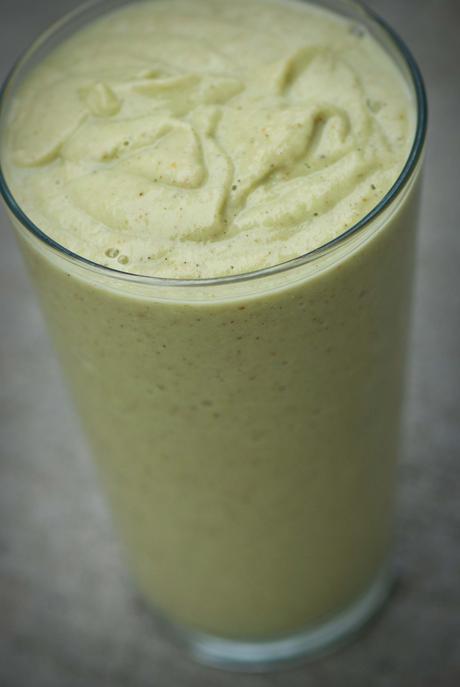In defense of breakfast
Recently there has been a trend towards more health & nutrition gurus telling people that perhaps breakfast isn’t so important after all. There are plenty of studies and personal anecdotes of people who skip breakfast some or most of the time and aren’t overweight, and of course other stories of people who eat their largest meal at night without suffering any known health repercussions.
Few people would argue that skipping breakfast and then having a healthy salad with goat cheese and walnuts for lunch, a small organic apple for a snack, and steamed heirloom vegetables (cooked in real butter) and baked wild salmon for dinner is going to cause obesity or any other serious health consequences. But unfortunately, this is not the usual way people tend to eat when they skip breakfast! By skipping breakfast, most people are famished by lunch, causing them to reach for a sugar and fat laden snack such as corn chips and a soda around mid-morning and fried food lacking any vegetable or micronutrient content for lunch. By the end of the day, this lack of nutrition will cause most to feel too tired to exercise or do much of anything besides watch TV, surf the internet, or lurk on facebook posting photoshopped images of themselves. They’ll eat a carb and fat laden comfort food before bed, and wake up the next morning with no appetite for breakfast because they’ll still have undigested food in their bellies.
It would definitely be better to skip breakfast and then eat healthy foods the rest of the day than to eat cereal, donuts, pancakes, or canned biscuits for breakfast. But if you want a healthy start to your day that will provide a nutritional boost and also keep you going until lunch so you can stay energized for the entire day with no afternoon slump and with plenty of fuel to even fit in a tough workout after work, I would suggest eating a hearty breakfast (something nutrient-dense) — but NOT a heavy breakfast (something dense in calories, fat, and sugar). A heavy meal will make you too lethargic and might lead to constipation over the long-term, but a hearty meal will satisfy your hunger, stimulate regular bowel function, and give you an energy boost.
Whey Protein — The Ideal Breakfast Food
Whey protein satisfies hunger better than rice protein, pea protein, egg protein, and soy protein, and it also boosts your metabolic rate for as long as 24 hours after consumption. If you like to practice yoga or go for a run in the mornings, a smoothie made with whey protein is one of the best foods to fuel yourself with afterwards. Steer clear of things like Vitamin water, fruit juice, date bars, oatmeal bars, Ezekiel bread (or other forms of wheat bread), and other carb/sugar-based items for breakfast or post-workout. “Healthy” foods like these will halt HGH production, stimulate an insulin surge, and inevitably make you hungry and irritable a couple of hours later.
The amino acids found in grass-fed whey protein activate certain cellular mechanisms (including mTORC-1) that promote muscle protein synthesis, boost thyroid hormone production, and also protect against declining testosterone and HGH levels after exercise. If you do your physical fitness practice in the mornings, the ideal time to eat breakfast is about an hour after you finish your practice.
The Components Of A Healthy Breakfast Smoothie
I have always been a breakfast eater and I’ve experimented with different breakfast items over the years. Oatmeal or cereal, milk, and fruit for breakfast always left me feeling too hungry by mid-morning, while sausage and pancakes made me sluggish and slightly sick at my stomach. Just drinking juice or having a nut and fruit based vegan dish for breakfast lead to decreased muscle strength and tone particularly in my upper body and abs. A whey-protein based breakfast with a moderate amount of healthy saturated fat, on the other hand, keeps me satiated for several hours without making me feel sluggish or causing me to lose muscle tone. Now there’s good science to back up what my body knew all along!
Here’s some ingredients that I recommend for making the perfect breakfast smoothie.
- 1 egg (pasture raised if possible — freeze in an ice cube tray to prevent food-borne illness)
- 1 tbsp raw virgin coconut oil (Artisana is my favorite raw coconut oil)
- 1 tbsp PaleoFiber (for a thicker smoothie PLUS prebiotics and probiotics)
- 1 tbsp PaleoReds or PaleoGreens
- 1 capsule CoQNol
- 1 capsule vitamin K2
- 2 scoops PaleoCleanse
- 1 scoop PaleoMeal
- 1/4 tsp pink Himalayan salt or Redmond Real Salt
- optional: 1 packet of unsweetened frozen Sabazon acai or 3/4 cup frozen berries (strawberries, blueberries, raspberries)
- optional: 1 tbsp cacao powder, almond butter, coconut flakes, cacao nibs, or your favorite extra ingredient
- about 2 cups of ice or cold water (amount varies depending on how thick you want your smoothie)
Blend all these ingredients together using a Vitamix or any blender that can handle ice. I purchased a cheap blender at Target that gets the job done and is easy to clean.
Some items to avoid putting in your smoothie include:
- canned coconut milk (contains BPA which is an endocrine disruptor and obesogen)
- soy milk, rice milk, flax milk, almond milk, and other processed and ultra-high temp pasteurized beverages stored in aseptic containers (If you want almond milk, either make your own or get some delivered from a company that makes it fresh.)
- agave nectar (can lead to increased abdominal adiposity and metabolic syndrome)
- conventional bananas (loaded with sugar and laden with pesticides if not organically grown)
How to Select a High Quality Whey Protein
Since whey protein is a by-product of dairy, it’s important to make sure it’s derived from grass-fed cows that were not injected with hormones or given antibiotics on a daily basis in their feed. It should also be minimally processed in order to preserve its natural health-promoting compounds such as immunoglobins, bovine serum albomin, lactoferins, and other key amino acids and nutrients.
Most commercial whey products are derived from pasteurized dairy and processed with heat and acid, which destroys the whey’s fragile immuno components and damages important amino acids. Many of them also contain chemical additives, detergents and artificial sweeteners, which are known for their health shattering effects. And contrary to popular belief, artificial sweeteners such as sucralose (Splenda), aspartame, and Ace-K actually hinder your ability to lose weight or maintain your ideal weight because they impair your ability to regulate your appetite naturally.
My favorite whey protein powders are PaleoMeal and PaleoCleanse — not only because they are made from grass-fed dairy and are low temperature processed (maintaining live enzymes and immunoglobulins) — but also because they’re loaded with food-based vitamins and minerals (no synthetic vitamins and minerals), lightly sweetened with stevia, mix well with no lumps (and no chalky mouthfeel), and come in several flavors that all taste great.


